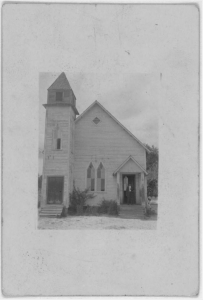A new religious tradition emerged when slaves were brought to America, which blended elements of indigenous West African worship with the Protestant worship traditions of Euro-American whites. Along with this new form of worship came a new form of music. This African-American church music expresses both the deeply religious feelings of a passionate people and the profound pain and suffering of a people ravaged by years of enslavement.
As we explore some of the unique characteristics of Black church music, it is important to acknowledge that “Black music” is not a monolithic, homogenous entity: instead, it is made up of countless independent styles and traditions. That said, many of these musical traditions share common cultural influences, and as such share some general stylistic qualities that are worthy of study and analysis. It is in this spirit that we discuss the rich musical landscape of Black church music.
Perhaps one of the most notable characteristics of African-American religious music is its vociferous, improvisatory quality. This quality can be observed in the recording below; here, the Reverend Henry Ward leads a prayer in a chant style, similar to the way a white congregation might intone a psalm. At the :54 second mark, however, a woman from the congregation chimes in with a response, weaving a florid melisma above the preacher’s chant. Other voices join in, either adding to the melismatic accompaniment or offering a shouted “Amen!” Later on, the florid melismas give way to a simple, passionate humming. The resulting heterophony is both deeply moving and, presumably, entirely improvised.
These musical outbursts are no mere embellishments, but rather are integral parts of the worship experience. In Shane White’s book, The Sounds of Slavery, he quotes Elizabeth Ross Hite, a former slave, who claims that “you gotta shout and you gotta moan if you wants to be saved” (102). Indeed, the melismas, hums, and interjected “amens” are just as holy and full of meaning as the Reverend’s chant which they are decorating.
Another hallmark of African-American sacred music is its focus on Old Testament texts, to the near exclusion of the New Testament. Slaves identified closely with the narrative of Exodus, seeing reflections of themselves in the enslaved Israelites. Because of their constant yearning to escape captivity, many African-American spirituals use Old Testament language to describe themes of liberation and freedom.
Having examined just a couple of the many unique features of African-American church music, we can begin to understand how fascinating and complex this tradition is. The collision of Indigenous African worship traditions with white Protestantism, when filtered through the horrors of American chattel slavery, produced a rich and multifaceted musical tradition which can still be observed in Black churches throughout America today.
Sources
Lomax, Alan, photographer. Rev. Haynes’s methodist church, Eatonville, Florida. June. Photograph. Retrieved from the Library of Congress.
Murphy, Joseph M. Working the Spirit: Ceremonies of the African Diaspora. Boston, MA, Beacon Press, 2003.
Ward, Henry Rev., et al. Prayer. Livingston, Alabama, 1939. Audio. Retrieved from the Library of Congress.
White, Shane and Graham J White. The Sounds of Slavery: Discovering African American History through Songs, Sermons, and Speech. Boston, Beacon Press, 2005.

